I thought you might like to know that plans are afoot to substantially redevelop Liverpool Street Station. You can read more about them here and here.
Liverpool Street is the UK’s third busiest station after Victoria and Waterloo. This will no doubt come as no surprise to those of you who battle your way through here every day in the rush hours. However, maybe I can persuade you to spend a little time exploring the station and its surroundings since it does have some really fascinating aspects to it.
Next to the station eastern entrance is a Wetherspoons in a building called Hamilton Hall. It is named after Lord Claud Hamilton, chairman of the Great Eastern Railway Company (1893–1923), and is the former ballroom of the old Great Eastern Hotel. Pop in for a drink and cast your eyes upwards …
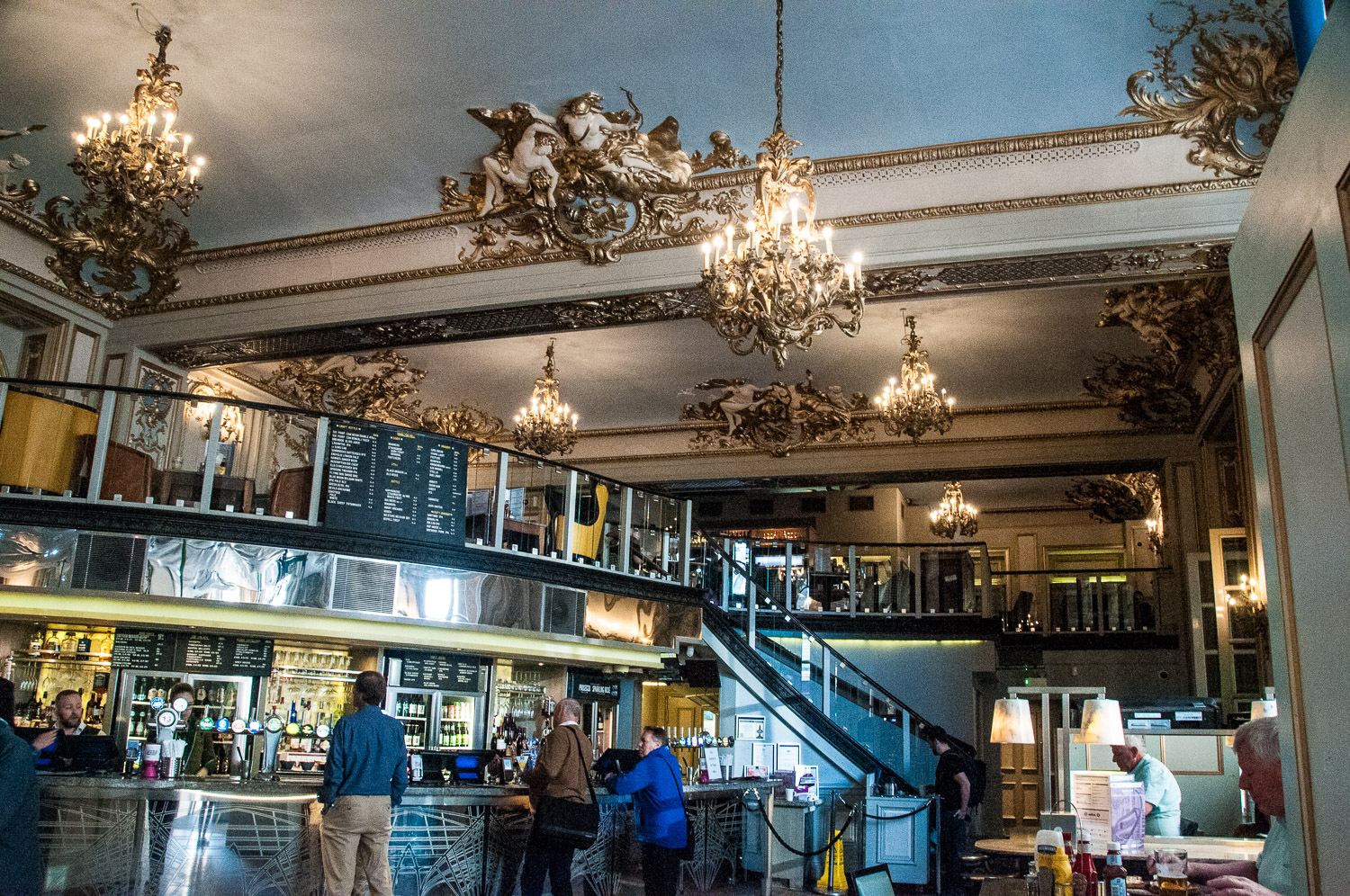
The bar area.
Yes, the original ballroom decorations are still there, and you can get an even closer look if you go upstairs …
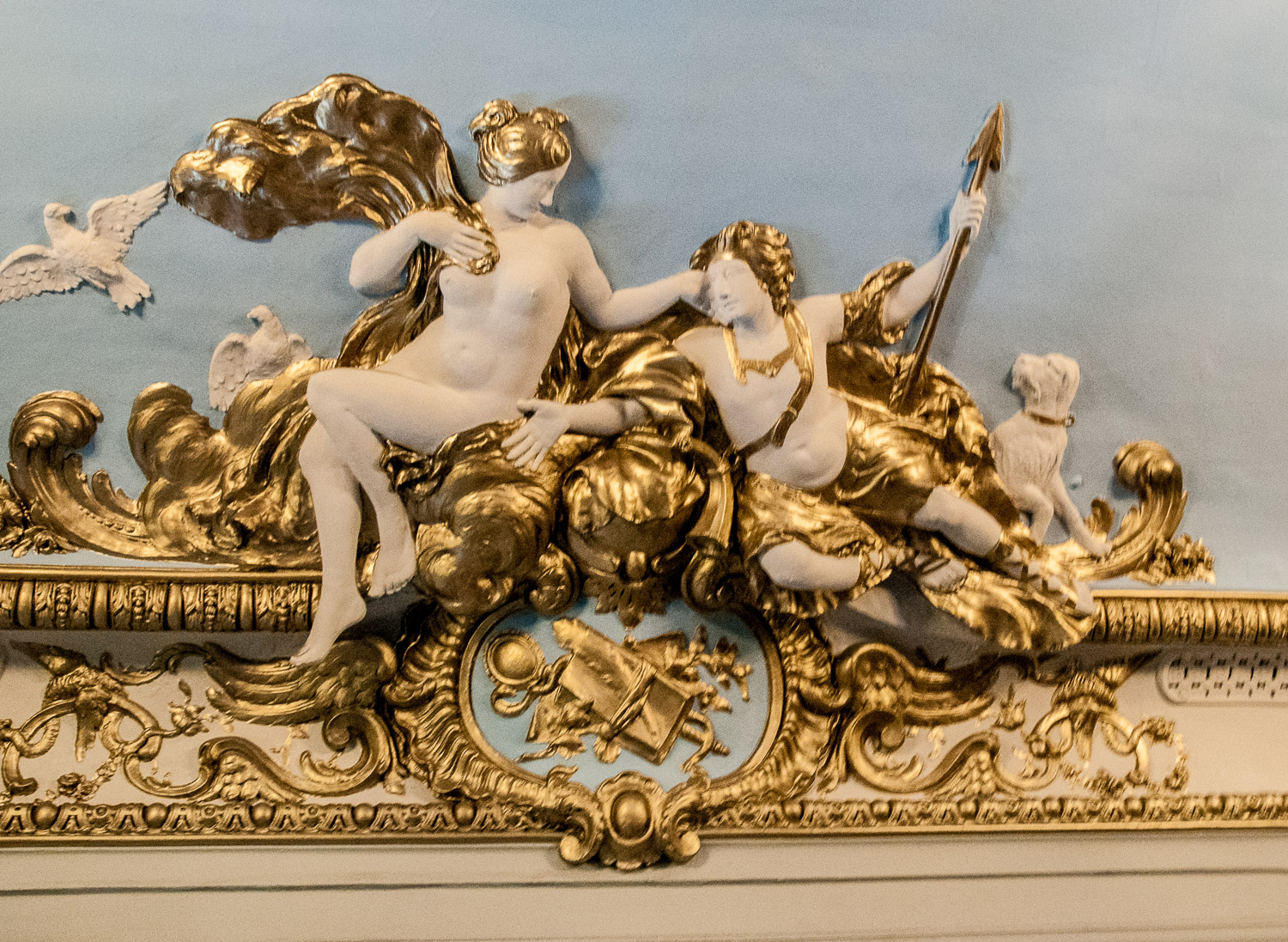
At least one source states that the design was copied directly from the Palais Soubise in Paris in 1901. Opulent is the word that springs to mind.
Named after the British Prime Minister Lord Liverpool, Liverpool Street was the Great Eastern Railway’s London Terminus with the first suburban trains departing in 1874.The Great Eastern, and its successor the London & North Eastern Railway, concentrated on developing and increasing its suburban steam services, a business model that continued until steam was withdrawn in the 1960s. Under its modernisation plan, British Railways electrified all suburban services running form Liverpool Street station, and all steam had been replaced by diesel locomotives by the end of 1962.
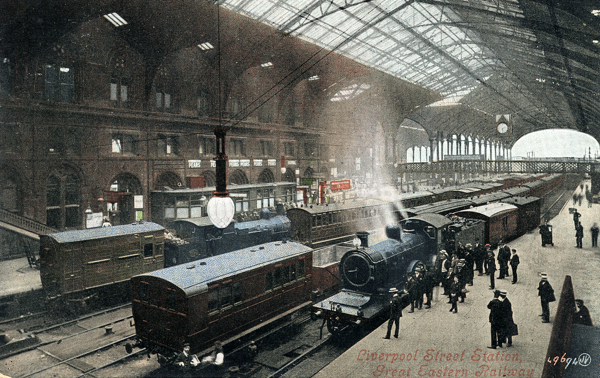
The days of steam.
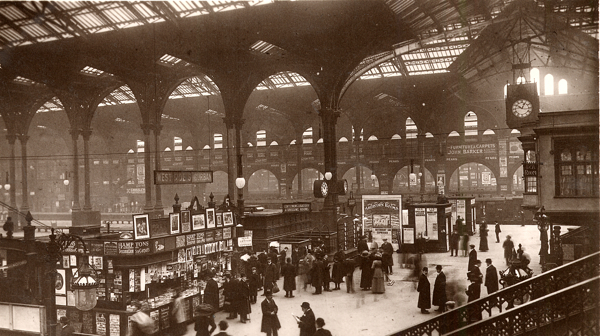
Someone once described it as a ‘Dark Cathedral’.
A plan to demolish the station, and its neighbour Broad Street, was first put forward in 1975 but fierce opposition meant a compromise had to be reached. Eventually, only Broad Street was demolished (in 1986) and Liverpool Street developed more sympathetically.
Nicely preserved are traces of a time when astonishing care was taken with what people would see on starting and finishing their journey.
What about these lovely reliefs sculpted in brick against the back wall of the Great Eastern Hotel …
A steam train …
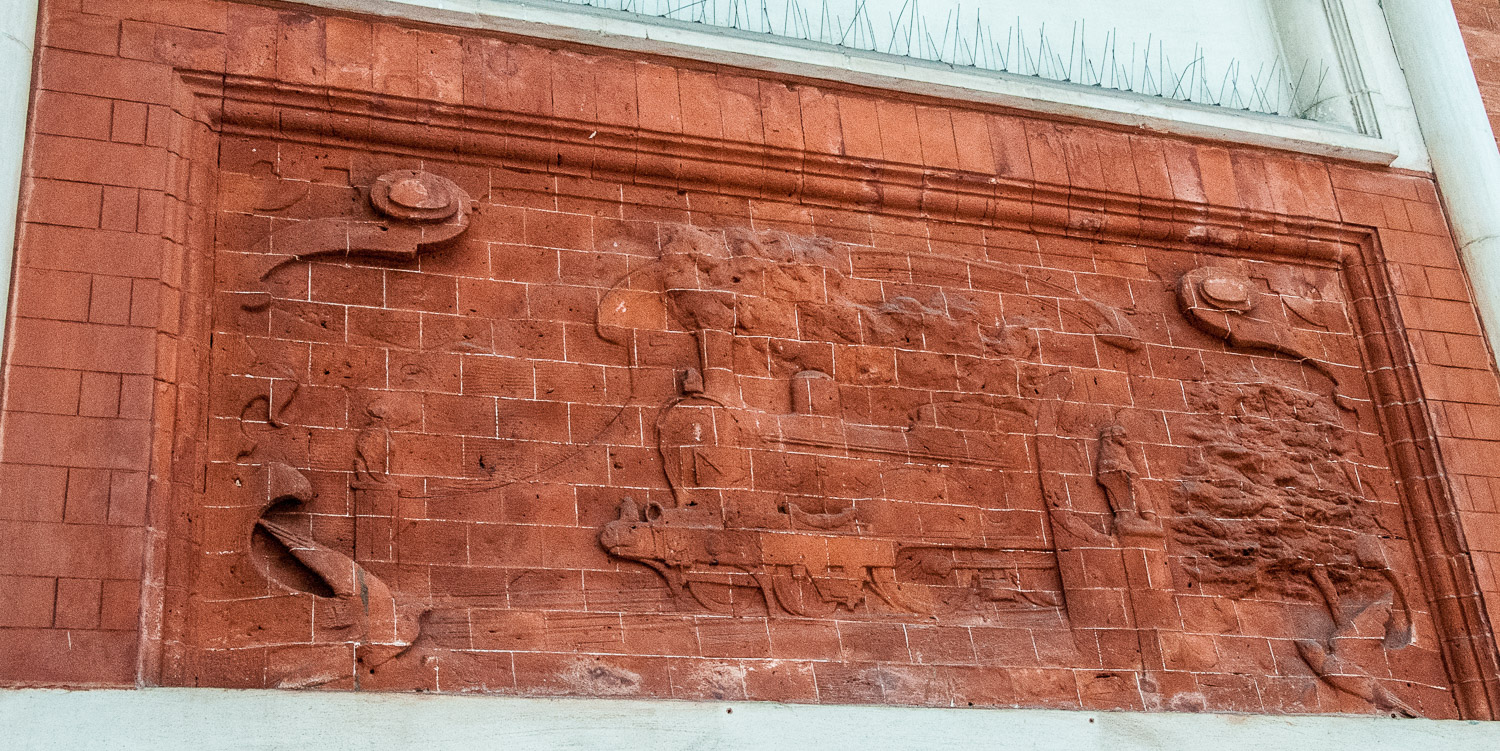
One of the Great Eastern Railway’s own ships …
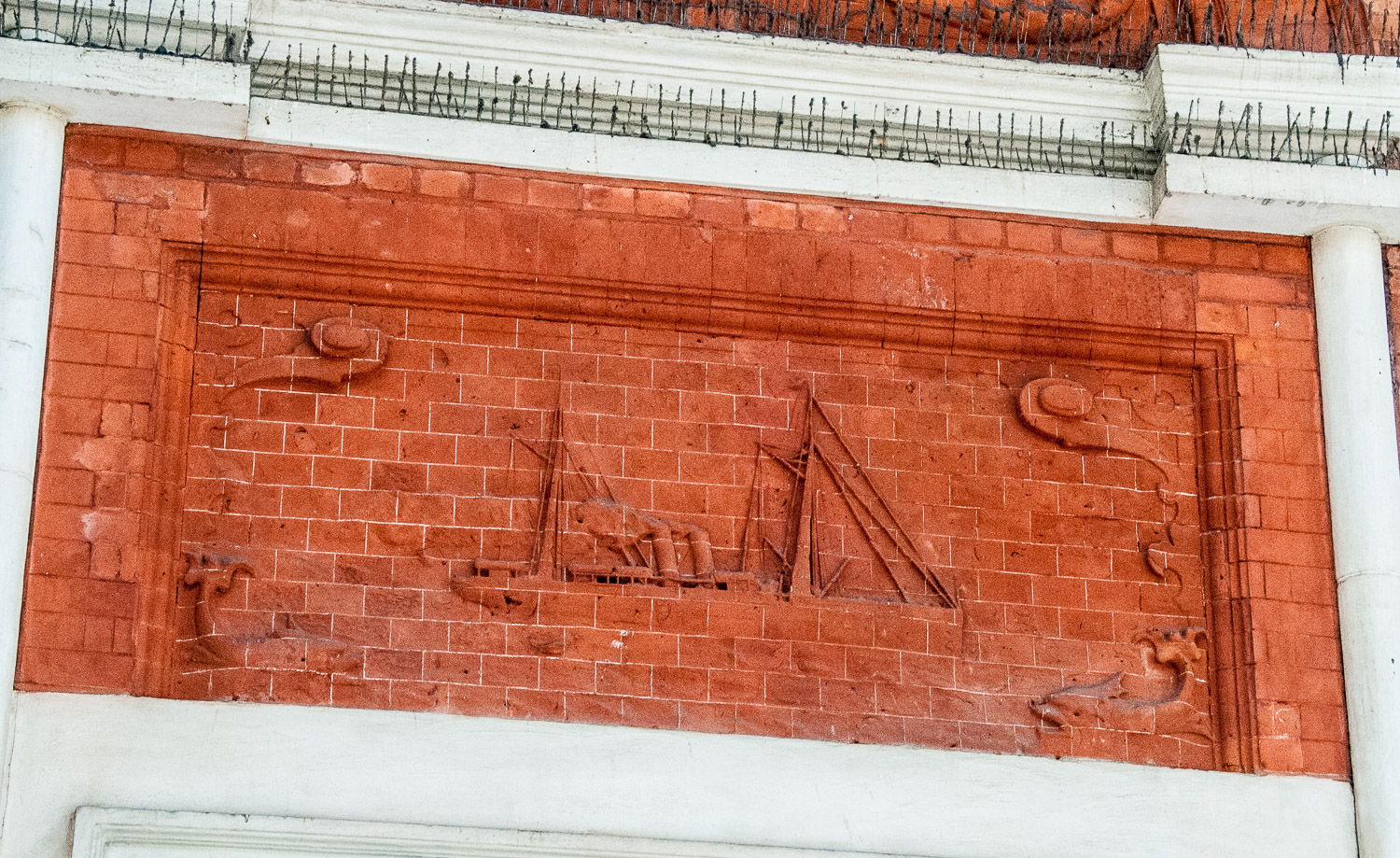
And a fireman, or stoker …
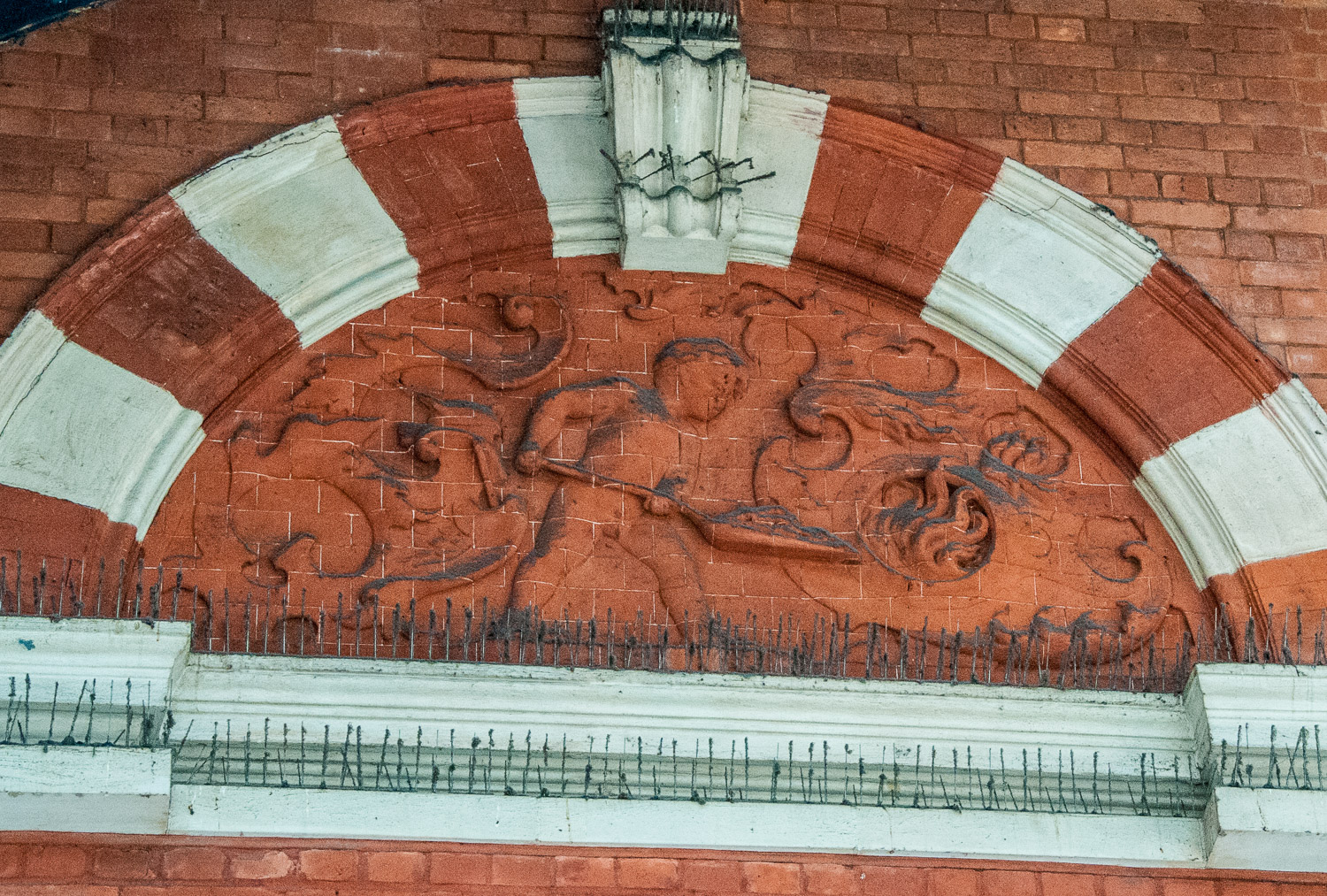
The western entrance towers hold a clock and the old railway emblems …
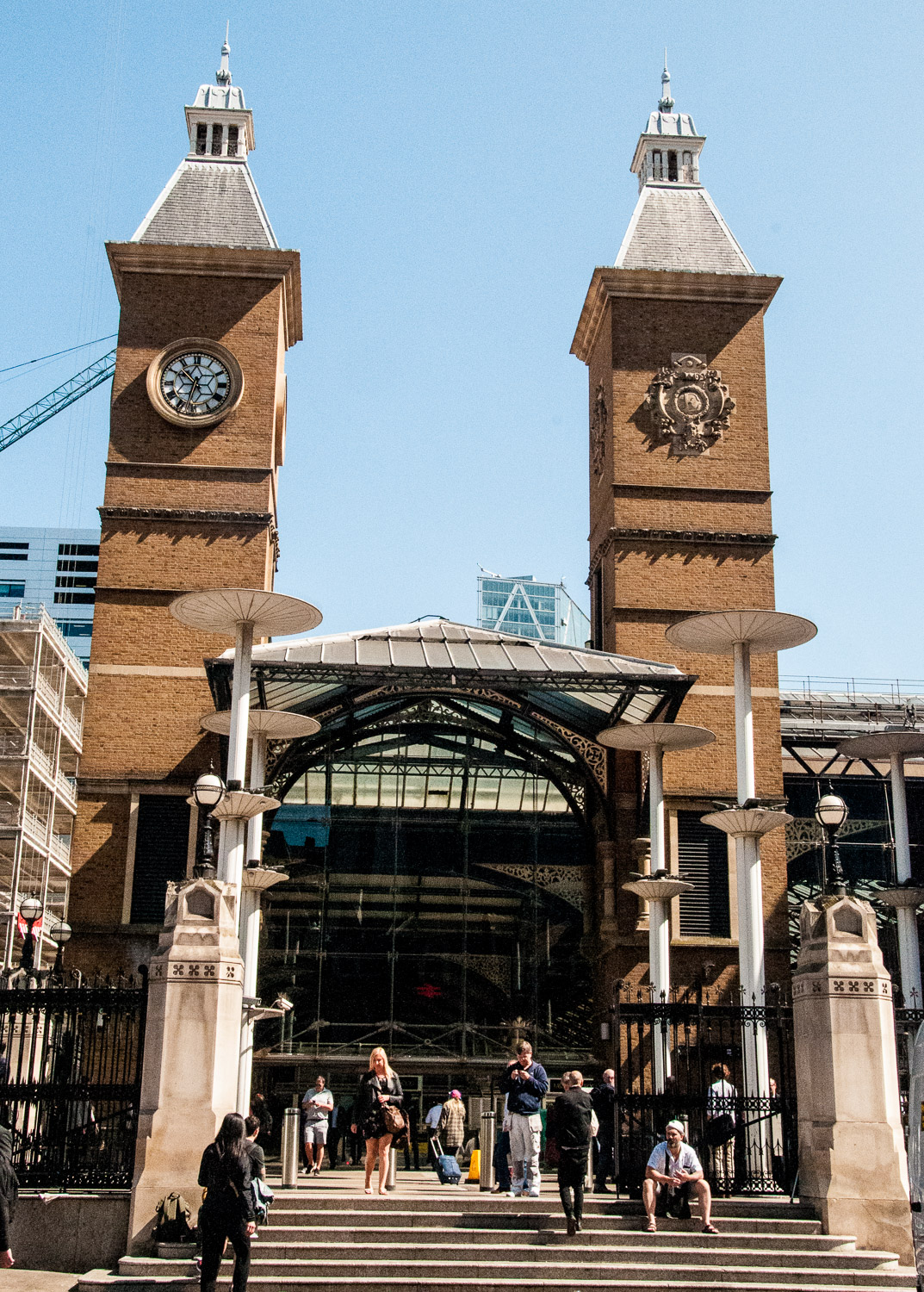
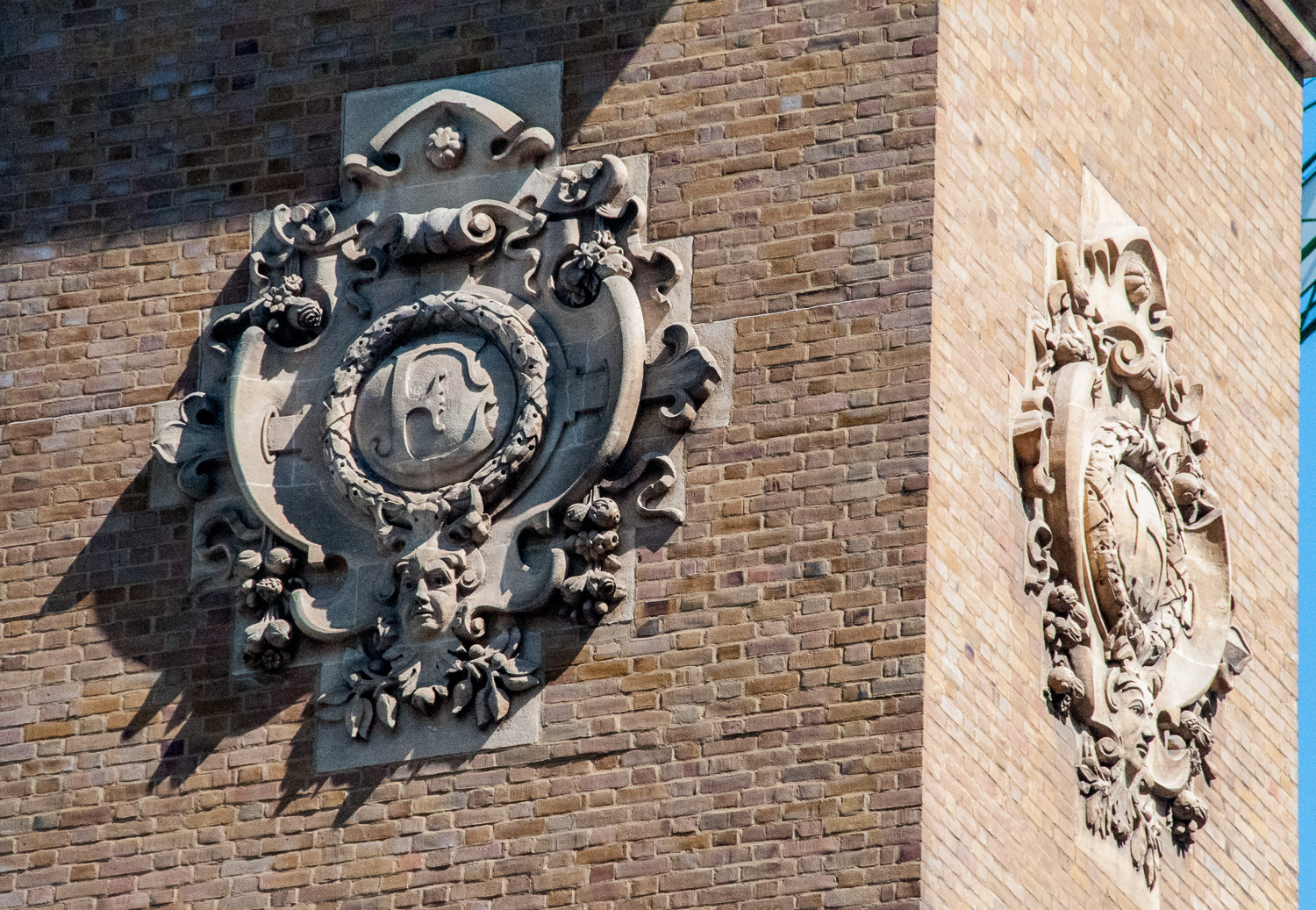
Just outside the entrance is the Kindertransport commemorative statue …
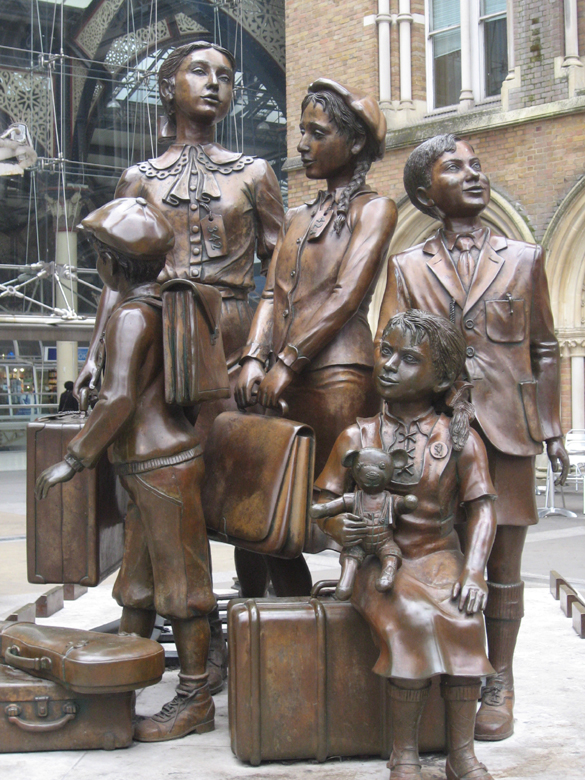
Photograph: Robin Coupland. Statue by Frank Meisler (2006).
In 1938 and 1939, nearly ten thousand unaccompanied Jewish children were transported to Britain to escape persecution in their hometowns in Germany, Czechoslovakia and Austria. These children arrived at Liverpool Street station to be taken in by British families and foster homes. Often they were the only members of their families to survive the Holocaust.
The station contains a number of other poignant memorials. The inscription above the largest one reads:
To the glory of God and in grateful memory of the Great Eastern Railway staff who in response to the call of their King and Country, sacrificed their lives during the Great War.
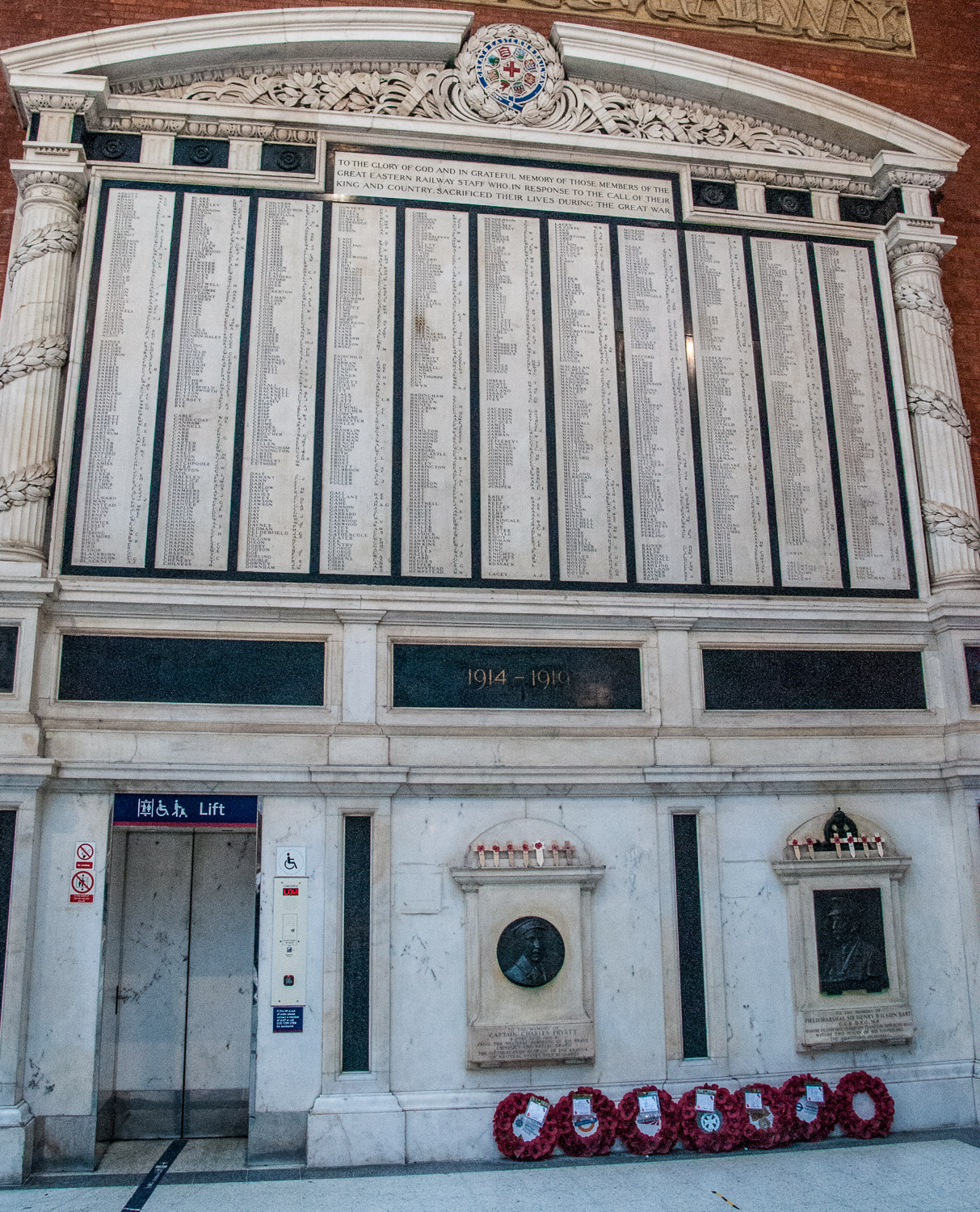
There are over 1,100 names.
There are two plaques below the main memorial …
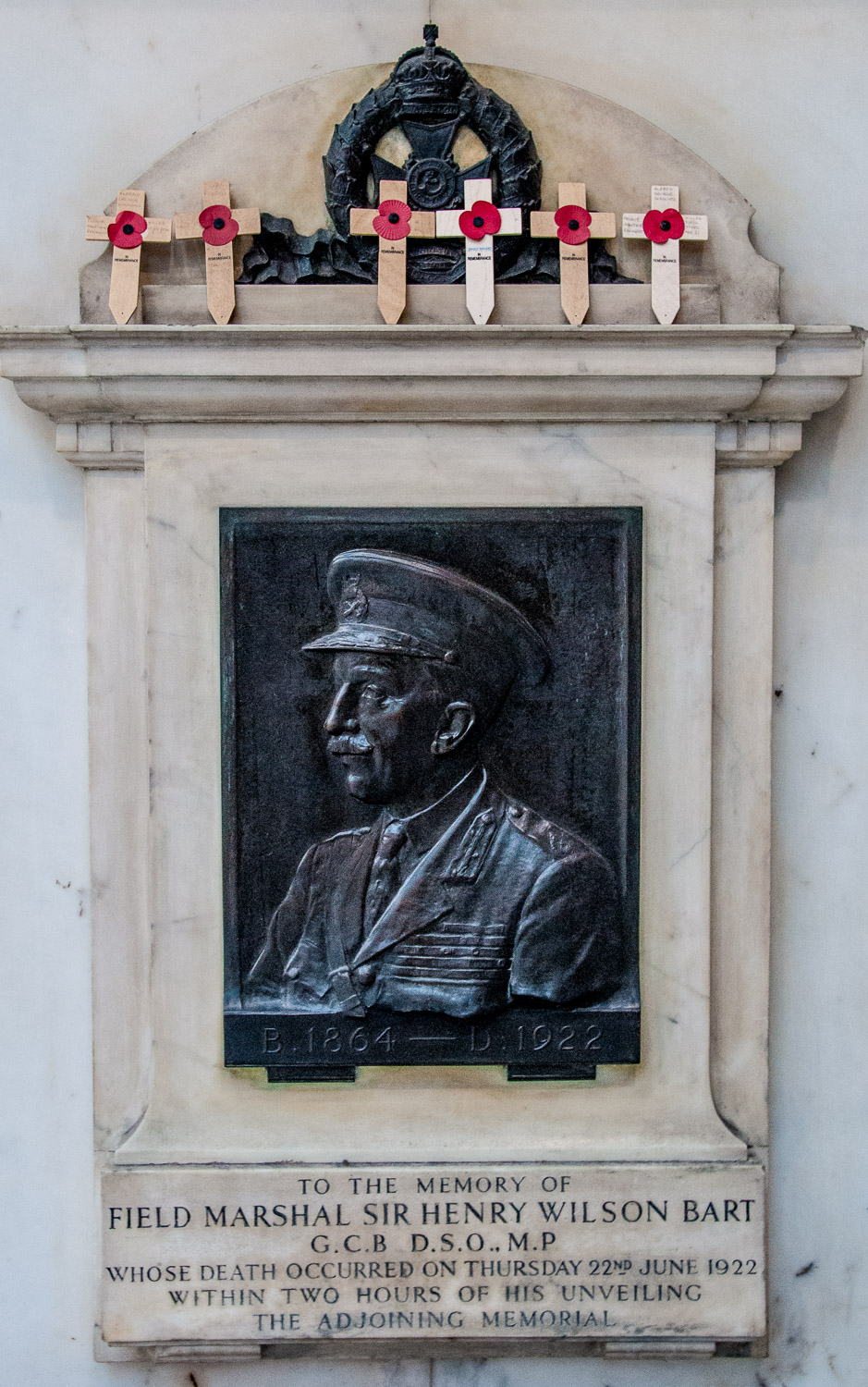
Wilson was assassinated outside his house in Eaton Place at about 2:20 pm. Still in full uniform, he was shot six times, two bullets in the chest proving fatal. Some newspapers provided a reconstruction …

A French newspaper version showed him with sword drawn but actually he had no time to defend himself …

Sir Henry’s House today …
The two perpetrators, Reginald Dunne and Joseph O’Sullivan, shot two police officers and a chauffeur as they attempted to escape but were surrounded by a hostile crowd and arrested after a struggle …
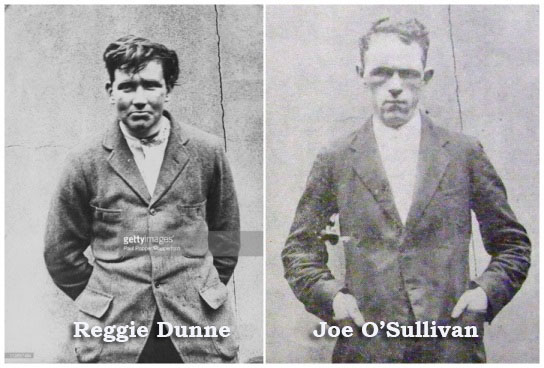
Interestingly both were former British army officers and O’Sullivan had lost a leg at Ypres, his subsequent disability hindering their escape. After a trial lasting just three hours they were convicted of murder and hanged at Wandsworth gaol on 10 August that year – justice was certainly delivered swiftly in those days. No organisation claimed responsibility for Wilson’s murder. I try in this blog to be as accurate as possible with regard to history and there are numerous opinions as to the background to this event. If you are interested, the online information available is fascinating.
Nearby is this plaque …
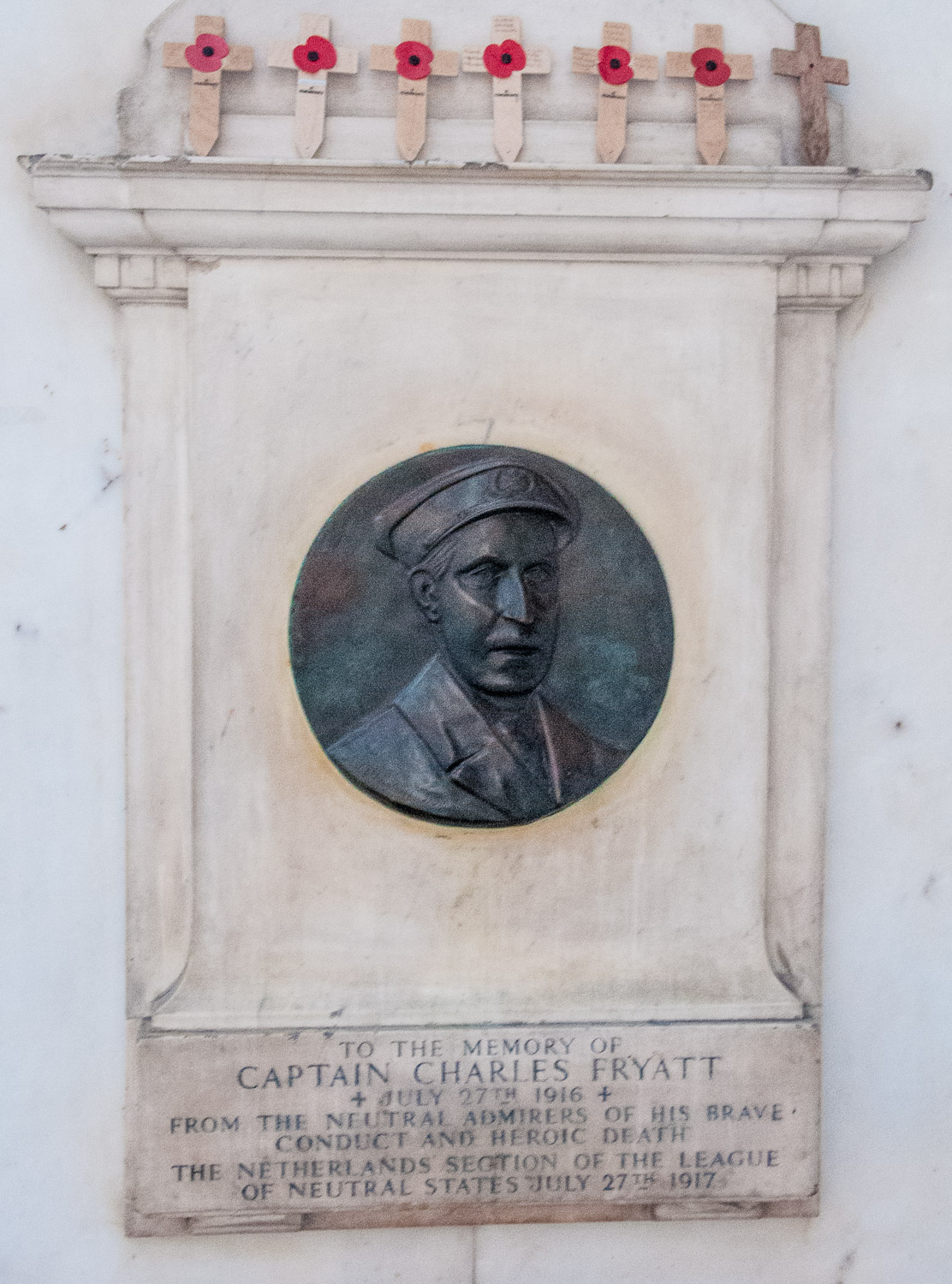
The Master of the Great Eastern Railway ship SS Brussels, Fryatt was court martialled for attempting to ram an attacking German submarine and being a franc-tireur (a civilian engaged in hostile military action). Having been found guilty, he was executed almost immediately by firing squad, after a show trial lasting barely two hours, during which he was afforded no proper defence. As happened following the execution of Edith Cavell in 1915, the event caused international outrage, and led to Fryatt’s body being repatriated after the war and given a ceremonial funeral. If you have the chance, read about him online – the story is absolutely fascinating.
This memorial was unveiled in 1920 by the Lord Mayor …
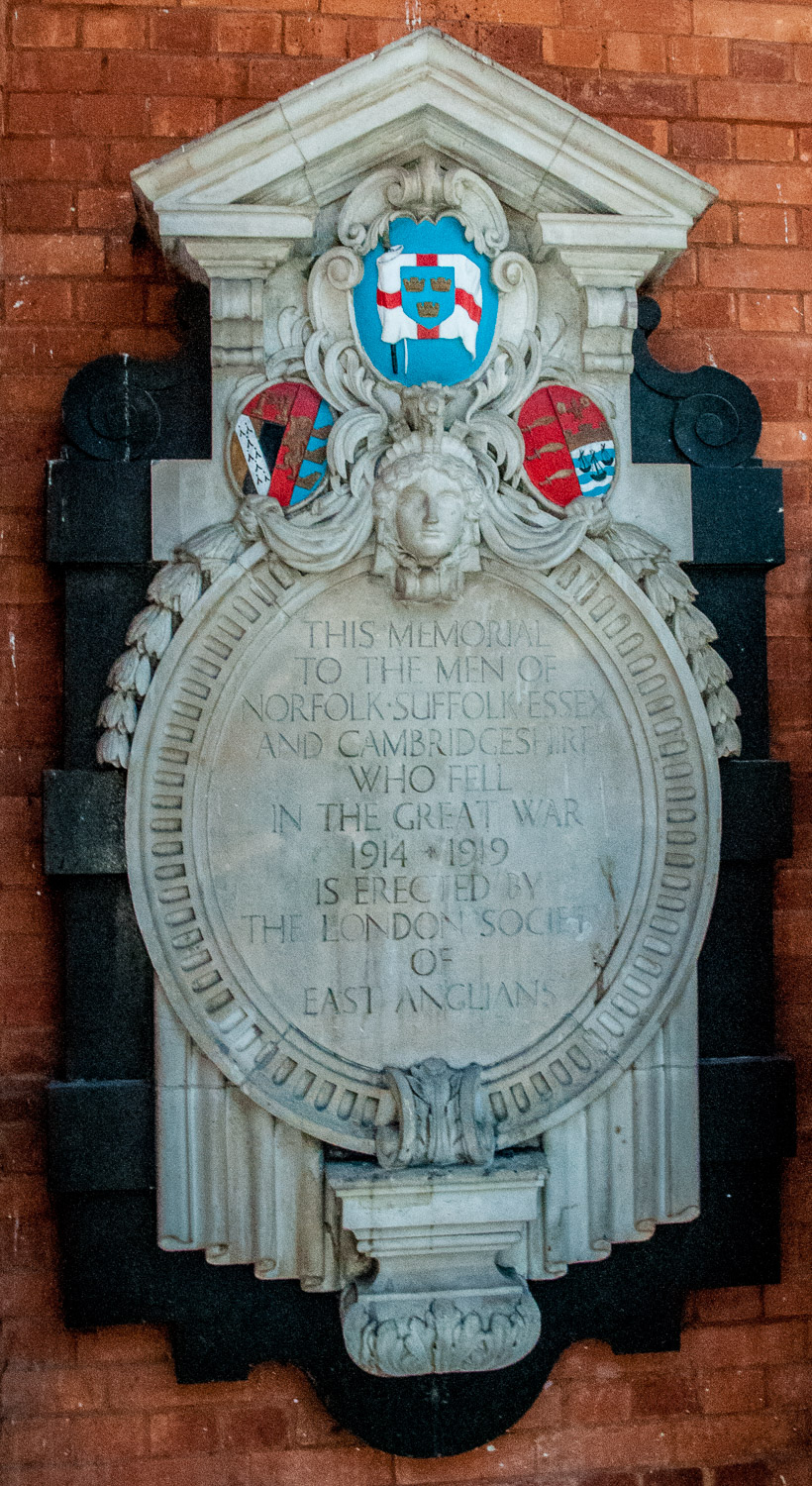
I have been unable to find out anything about The London Society of East Anglians.
The station was built on the site of the old Bethlehem asylum for the mentally ill commonly known as Bedlam. So when trains are totally disrupted and people say ‘it’s Bedlam here’ – once upon a time it really was.
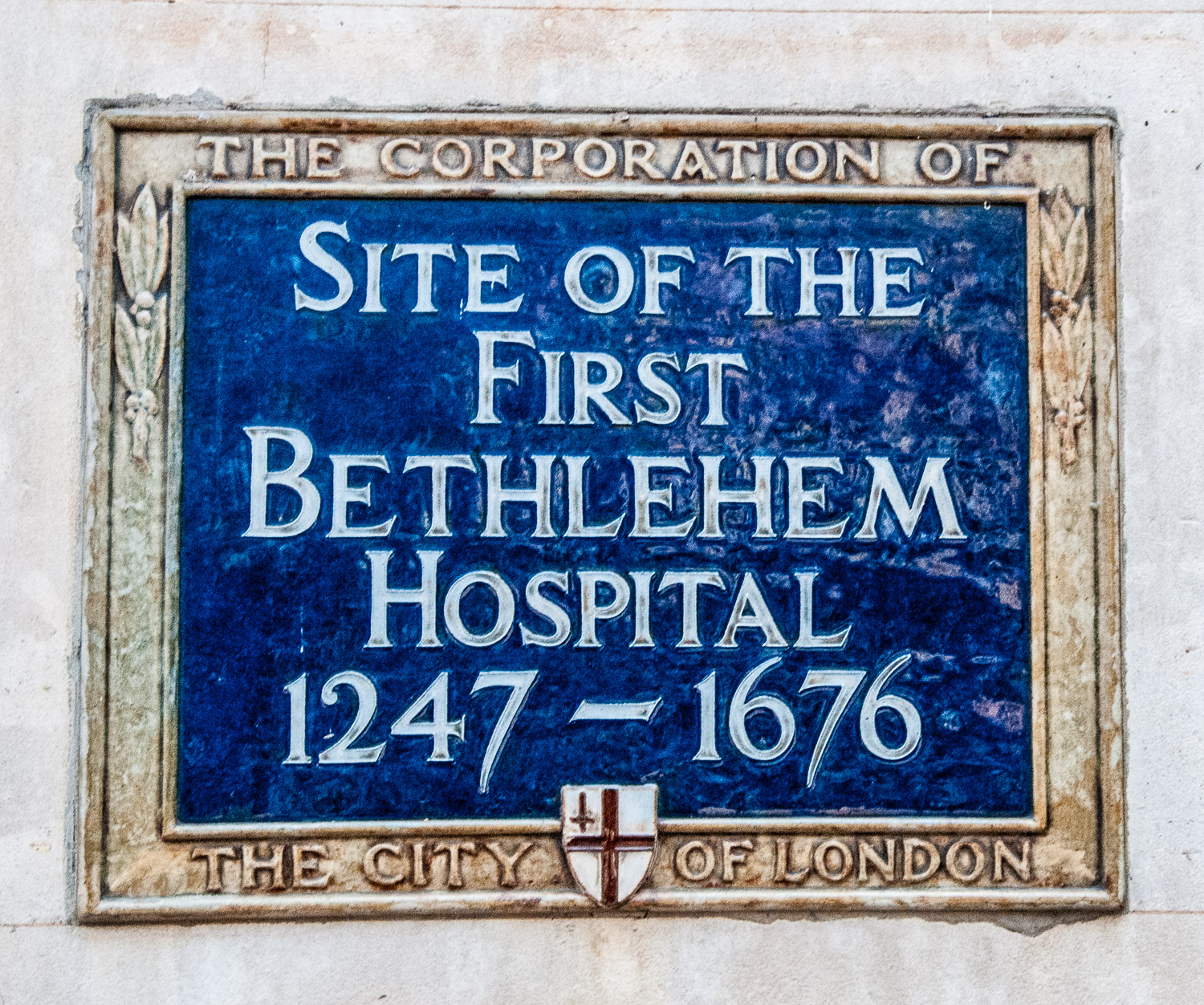
If you would like to follow me on Instagram here is the link …

